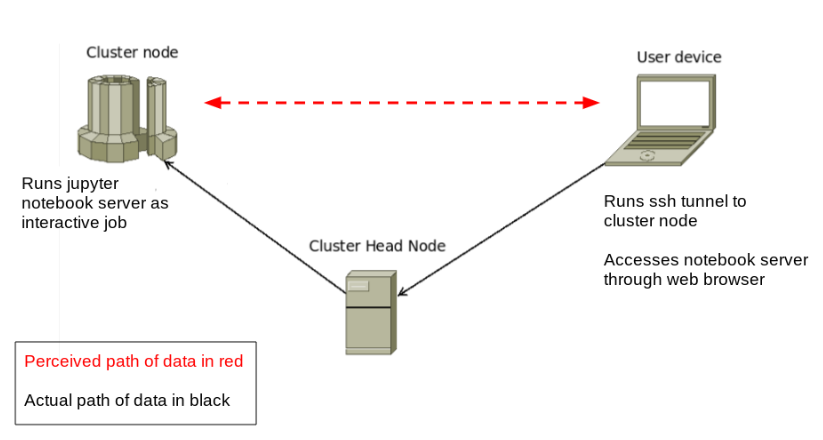
On the local machine browser load localhost:8888 and the Jupyter Notebook from your remote machine will load out as expected. Run: Open another terminal window on your local machine, input: ssh -NL localhost:1234:localhost:8888
Note that running the SSH tunnel with -N will not log any outputs, as long as you do not get an error this means you have established a tunnel. The bind_address of “localhost” indicates that the listening port be bound for local use only, while an empty address or ‘*’ indicates that the port should be available from all interfaces. However, an explicit bind_address may be used to bind the connection to a specific address. For simplicity we will use ssh port forwarding from.

Port forwardings can also be specified in the configuration file.Whenever a connection is made to the local port or socket, the connection is forwarded over the secure channel, and a connection is made to either host port hostport, or the Unix socket remote_socket, from the remote machine. This works by allocating a socket to listen to either a TCP port on the local side, optionally bound to the specified bind_address, or to a Unix socket. -L local_socket:remote_socket Specifies that connections to the given TCP port or Unix socket on the local (client) host are to be forwarded to the given host and port, or Unix socket, on the remote side.ssh -N -L localhost:8888:localhost:8889 is a break down of the ssh options

Step 2 is to set up an SSH tunnel from your local machine to port 8889 on the remote machine where the Jupyter Notebook is being served.

ssh jupyter notebook -no-browser -port=8889 Setting up an SSH tunnel Step 1 is to ssh into your remote machine and launch Jupyter Notebook to a local port with the -no-browser option. In this post I will go over how I connect to my work machine and run Jupyter Notebook workloads when I am working remotely. Photo by Florian Olivo on Unsplash My desktop at work is a powerful machine I use for exploratory data analysis and other machine learning work-flows.


 0 kommentar(er)
0 kommentar(er)
